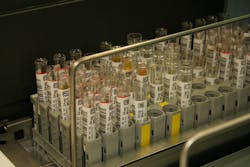A new research study leveraging a database from the Department of Veteran Affairs offers insight into the outcome of specific treatment patterns for advanced bladder cancer patients, according to a news release from University of Texas Medical Branch.
Lead author Stephen Williams, MD, MS, of the University of Texas Medical Branch says it is one of the first comprehensive studies looking at both the outcomes and the costs of treating a potentially lethal and devastating type of bladder cancer.
The study was published in JAMA Network Open.
The study looked at the results of using bacillus Calmette-Guérin (BCG) therapy for patients with high-risk non-muscle invasive bladder cancer (NMIBC). The analysis involved 412 high-risk NMIBC patients culled from a database of 63,139 patients diagnosed with bladder cancer who had received more than one dose of BCG within VA centers across the United States from Jan. 1, 2000, to Dec. 31, 2015.
“This study allowed us to determine where differences in treatment patterns led to differences in outcomes according to specific features of this disease. This is important as this group of patients are at increased risk of progression to advanced stage disease, which is a deadly diagnosis,” said Williams, Professor and Chief of the Division of Urology as well as Director of Urologic Oncology at UTMB.
Among other results, the study found that 95% of these high-risk patients completed adequate induction BCG therapy, but only 37% of patients completed adequate maintenance BCG therapy.
In addition, the study looked at the costs of treating bladder cancer for this same population. Bladder cancer has one of the highest lifetime treatment costs of all cancers. The cost of treating bladder cancer in the United States in 2020 approached nearly $6 billion alone.
According to the study, total median costs at one, two and five years from start of BCG induction were $29,459 ($14,991-$52,060), $55,267 ($28,667-$99,846), and $117,361 ($59,680-$211,298), respectively.
Patients who progressed had significantly higher costs (5-year, $232,729 median cost), with outpatient care, pharmacy, and surgery-related costs contributing largely to the higher costs associated with disease progression.

